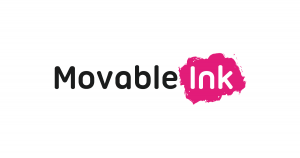Embracing Consent and Privacy is the Best Way to Breathe New Life into Marketing
 After years of debate, infighting, and fear mongering, GDPR finally arrives in force on May 25. For many marketers, the path forward isn’t clear, and risk only seems to grow, given ensuing developments with ePrivacy, a pending ballot initiative in California, and a growing list of regulations appearing around the globe. Yet, the time has never been better to rethink how marketers approach privacy and personalization. It’s time to embrace consent as a fundamental component of personalization.
After years of debate, infighting, and fear mongering, GDPR finally arrives in force on May 25. For many marketers, the path forward isn’t clear, and risk only seems to grow, given ensuing developments with ePrivacy, a pending ballot initiative in California, and a growing list of regulations appearing around the globe. Yet, the time has never been better to rethink how marketers approach privacy and personalization. It’s time to embrace consent as a fundamental component of personalization.
Don’t worry, this article isn’t about GDPR per se. If you don’t yet know what GDPR is, crawl out from under that rock. There are thousands of articles and an army of consultants who can help you figure that out. This article, in contrast, is about helping you create a thriving personalization program in the era of consent.
Nearly every marketer knows the promise and pain of personalization. More personalization drives better outcomes for all: consumers see more relevant and helpful messages, and the vast majority of brands (87%) see better performance. Yet according to the Wall Street Journal, while 90% of marketers believe they are delivering personalized experiences, only 40% of consumers agree. Typically marketers see the obstacles to personalization as operational: a lack of access to data, difficulty gaining insights from the data, or an inability to use those insights effectively. Despite intense efforts over the last 20 years, it seems like great personalization forever recedes from our grasp.
Pause for a moment and think about those obstacles: a lack access, inability to extract insights, and an inability to use them. These obstacles to privacy are strikingly similar to the limits placed on consumer privacy and data protection. Under GPDR, European citizens must give marketers consent to use their data (access), for specific purposes (extracting insights), and with a clear indication of how that data will be used (activated). From an operational point of view, privacy and personalization are different sides of the same coin.
Also Read: GDPR Deadline Will Open the Door for Data Transparency
Why then is GDPR good for personalization?
Because GDPR prompts us to reconsider how we approach personalization — and to solve for data access and consumer consent challenges simultaneously. Increasingly we see marketers adopting a strategy of responsive personalization. Responsive personalization evokes responsive design — the approach to gracefully adjusting the design to fit the ever-growing number of screen sizes and contexts, from the palm-sized mobile phone to wall-sized displays.
Responsive personalization enables marketers to flexibly respond to the a) level of available customer data, b) the customer’s consent to use that data, and c) the environment in which it’s used. This strategy puts data access and consent onto the same spectrum, enabling marketers to instantly generate messages that are relevant and appropriate for the customer. And perhaps surprisingly, responsive personalization actually enables marketers to be more efficient, since they only need to design a single message that serves all possible outcomes.
Three Examples of Personalization in the Era of Consent
To better understand the concept of responsive personalization — be it for GDPR or because of inadequate data — suppose…
You have consent and you have the data to generate 1:1 personalization.
This is the ideal scenario for marketers. As customers opt-in to your marketing programs and practices, marketers can integrate, analyze, and generate content using the full suite of data at their disposal: CRM (name, loyalty, account history), contextual (location, device, weather) and behavioral (browsing, purchases) targeting. With modern marketing technologies, you can integrate your customer profiles across your technology stack, optimize messages using those profiles, then distribute those messages through customer-facing channels, such as email marketing programs.
Also Read: How Brands and Agencies are Affected by GDPR
You have limited consent, scant customer data, or can’t access the data.
This is the most common scenario for marketers. Perhaps you have customer data scattered about your organization. Perhaps you only have an email address or demographic data. Perhaps the customer has not agreed to personal data use. In this case, marketers can flexibly fall back to customizing content based on the context of the interaction.
GDPR classifies contextual data — such as the customer’s local weather or device type — as pseudonymous data. This type of data can be used in a broader range of scenarios and can be used to generate relevant content even when personal data is missing. Perhaps a brand doesn’t know if you have allergies, but it can use the pollen count in your geographic region to promote seasonal content in its messaging to you.
Also Read: What Does GDPR Mean For Martech?
You don’t have consent or you don’t have customer data.
Marketers can still bring their A-games to this scenario. Even when you can’t use personal data or have no customer data to use, you can still deliver relevant and timely content. Marketers can use real-time data from their own businesses to generate this content.
Think about real-time flight prices, store inventory, credit card APRs, and even just the current time (dayparting). Thanks to the growth of public and proprietary APIs, marketers are awash in data that can be used to generate great messaging — even when there is no personal data used in the message.
The key point to observe is that all three scenarios are just points on a single spectrum. Your personalization strategy should responsively adapt content to address each point in the spectrum so that you can deliver messages that are both relevant and appropriate. Marketers who practice responsive personalization build this fallback strategy into every message they deliver: starting with 1:1, consent-driven messaging, falling back to contextual messaging, and then all the way back to real-time customization, using only corporate data to generate the message.
There isn’t a digital marketer alive today who isn’t intimately familiar with the long-standing challenges to personalization. We all know the mantra “right message to the right person at the right time.”
Marketers have long known that data access, insights, and activation are key obstacles to personalization. Stepping back, it’s clear that operationally, GDPR just re-emphasizes these same challenges. Responsive personalization helps us see that customer privacy and personalization challenges are flipsides of the same problem.
Also Read: Why Buy Data When You Can Generate Your Own?
So why then is GDPR not the only good thing, but the best thing to happen to personalization?
We can look at growing demand for privacy as a limitation, or we can look at it as an invitation to more creative ways of building great relationships with customers and revenue for our shareholders.
With responsive personalization, we can focus our strategies and tactics towards building more intelligent content. And the benefits — building unique relationships with each individual customer, helping consumers understand and give consent, and using responsive content and design to differentiate further from our competitors — couldn’t arrive at a better time.
Also Read: GDPR Compliance Isn’t the End of the World for Your B2B Marketing







Comments are closed.